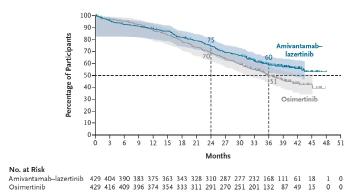There's a cure for congenital heart disease without opening your chest
Sep 16, 2025
|
Jang Ji-ik (Department of Pediatrics) of Bucheon Sejong Hospital said, `When it comes to congenital heart disease, there are many patients who get scared by it, saying, 'You have to do a lot of surgery,' and all of this is misunderstood due to lack of information.'
"It is a standard treatment for congenital heart disease, but as medical technology advances, non-surgical treatment using interventional procedures has become possible in more and more diseases. "However, there may be differences depending on the characteristics and anatomical shape of each disease, and as the strengths and weaknesses of the interventional procedure are clear, sufficient consultation with a specialist is needed before deciding on treatment." he said.
◇What the heart does
The heart consists of two atrium and two ventricles, each of which plays a unique role to supply blood to the whole body.
In detail, blood from the head and legs through the relative and inferior vena cava gathers in the right atrium, passes through the tricuspid valve, and moves to the right ventricle. Then, when it is sent to the pulmonary artery via the pulmonary artery valve, oxygen exchange occurs in both lungs.
After that, sufficiently oxygenated blood enters the left atrium through the pulmonary vein, passes through the mitral valve, and heads to the left ventricle, and finally, the left ventricle contracts strongly, and blood is supplied to whole-body organs such as the head, arms, and legs through the aortic valve.
◇ Types of congenital heart disease and treatments
Inborn heart disease is a disease in which abnormalities in the atrium, ventricle, and valve occur due to various causes during the formation of the heart in the fetal period, and it is known to occur in about 7 to 8 people per 1,000 babies born.
Types are largely divided into blue-colored heart disease, which turns the body blue, and non-blue-colored heart disease, which is not, and are divided into simple and complex types depending on the degree of disease.
The symptoms are very diverse, and during the neonatal period, difficulty in feeding, lethargy (stretched), delayed growth, and cyanosis may occur, and after infancy, frequent respiratory infections, difficulty breathing during exercise, and fainting may occur. In addition, there are cases where there are no symptoms at all, but they are accidentally found in an elderly person over the age of 70 and receive treatment.
There are three main methods of treatment for congenital heart disease: medication, surgery, and (intervention) procedures, and most drug treatments are used as preservation therapy except for arterial duct opening in premature infants.
Surgery is the standard treatment method for most congenital heart disease, performed by cardiovascular thoracotomy. It is a method of finding and fixing abnormal areas by opening the chest directly and looking at the heart, and it is known that Korea's surgical performance is very excellent.
Interventional procedures are a method of accessing and treating the heart and surrounding structures by inserting microtubules (catters) through large blood vessels in the thighs, arms, and neck. After checking the location and shape through X-ray imaging and contrast injection without opening the chest, analyzing the patient's condition by measuring heart pressure or oxygen saturation, and then performing treatment using various instruments such as balloons, shutters, stents, and artificial valves for each lesion, the Department of Pediatrics and Adolescents will be in charge.
◇ Types of congenital heart disease that can be treated with interventional procedures
To date, the standard treatment for most congenital heart disease is surgery through thoracotomy.
However, even with the same disease, interventional procedures may be possible depending on the location of the lesion and the patient's condition. There are several congenital heart diseases that can be treated with interventional procedures, typically atrial septal defects (ASD) with holes (defects) in the wall (septal) between the right atrium and the left atrium.
Atrial septal defect is a relatively common congenital heart disease, and blood from the left atrium leaks into the right atrium through a defect between the left atrium and the right atrium, resulting in a lung burden sequentially with the burden of the right heart, which requires a procedure to fill the hole (defect).
Arterial duct patency (PDA) is also treated with most procedures. During the fetal period, a blood vessel called 'aortic duct' exists between the aorta and pulmonary arteries, which plays an important role in blood circulation, but it is normal to block naturally after birth. However, the state in which this blood vessel remains unclogged is called arterial duct patency. In this case, blood from the aorta leaks into the pulmonary artery, putting a burden on the lungs, and the procedure can be treated by blocking the arterial tube with a cork-type device.
In addition, if the valve that discharges blood from the right ventricle to the pulmonary artery does not function properly, causing reflux, or if the tricuspid valve located between the right atrium and the right ventricle decreases, treatment can be performed with interventional procedures such as pulmonary artery valve insertion (PPVI and TPVI) and tricuspid valve insertion (PTVI and TTVI), respectively.
Manager Jang Ji-ik said, "In the case of ventricular septal defects, compared to surgery, treatment may result in complete atrioventricular block that cuts off the electricity of the heart, so caution is required. In addition, there is a possibility of damage to the tissue around the lesion, requiring a detailed examination before making a treatment decision. "Even at this risk, the procedure has the advantage of very small scars, mild pain, and quick recovery. In Korea, health insurance has been applied to ventricular septal defects since 2020, so it is more economical than surgery in terms of treatment costs.
"Before you decide on treatment, you should fully think about the advantages and disadvantages of surgery and procedural treatment, and make a decision through interviews with experienced specialists," he added.
|
This article was translated by Naver AI translator.















